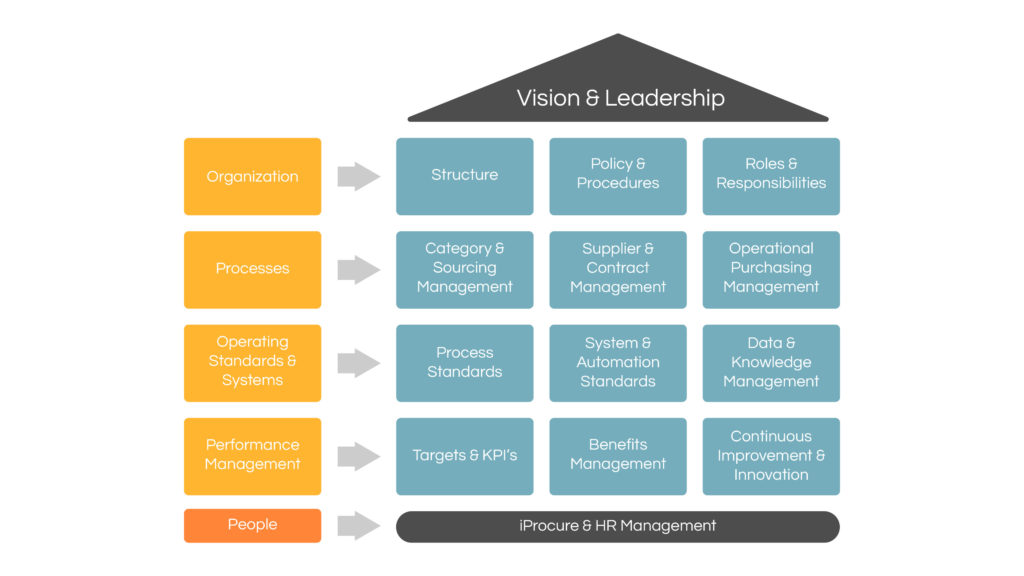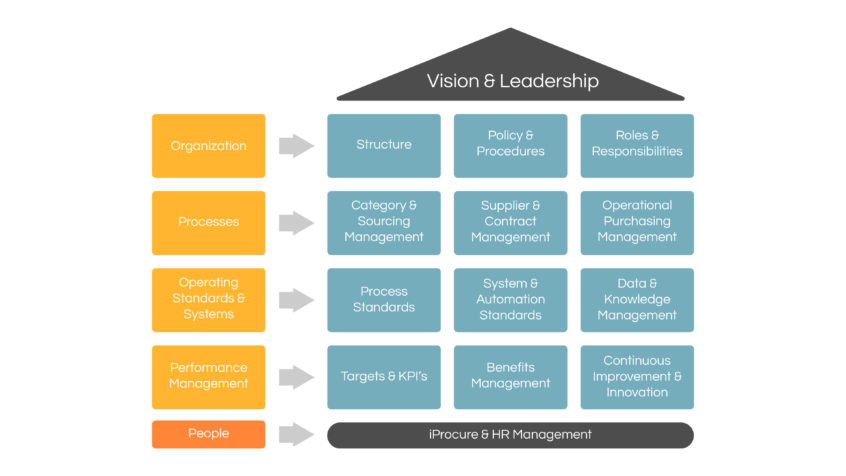Is your procurement function set up for success?
Procurement capability and operating model: Many procurement teams operate under an informal mandate that does not clearly articulate their accountability. In the absence of a capability model, the procurement function is fundamentally limited in its effectiveness. This is why we developed the CPP Procurement Capability Model:
1. Procurement capability and operating model

CPP Procurement Excellence House
The key to defining a procurement capability model is to consider the following:
1.1 Strategy:
Establishing the vision, objectives, strategies and performance measures for the team.
1.2 Governance and Alignment:
Defining executive oversight and how procurement interacts with the wider business:
- Defining the appropriate organization design, reporting relationships, and determining appropriate role and responsibilities.
- Defining appropriate procurement delegations that reflect value, risk and capability.
- Defining how risk and compliance are going to be measured and monitored.
1.3 People Capability:
Determining the right competency framework, identifying the key skills gaps and filling them. Our point of view is that high calibre procurement professionals need to be grown rather than sourced. We believe this is best done through coaching, experiential learning and clarity of roles and responsibilities with a clear career path.
1.4 Processes:
Procurement processes affect both the efficiency and effectiveness of the overall organization and are therefore a key enabler of operational excellence. Key processes include; category management, strategic sourcing, supplier management, and procure to pay. Procurement processes are ‘engines’ for delivery of policy and program initiatives. As such they need effective controls, performance checks against expectations and appropriate adjustments to drive world class performance.
1.5 Performance Management:
What are the KPI’s for procurement performance and what reporting is required to ensure procurement benefits are captured, measured and reported so that its contribution to the business is recognized?
1.6 Operating standards and systems:
What operating protocols and standards for systems, tools and templates that support and enable the procurement function?
2. Procurement’s challenge
We often see organizations attempting to improve one aspect of Procurement and being frustrated by poor results because the other elements necessary to sustain them are not addressed or only superficially dealt with.
Our observation is that many organizations do not recognize the importance of defining a procurement strategy or implementing effective governance and control. Without these key enablers procurement leaders and staff are cast as observers, unable to influence or drive sustainable performance improvement.
Consider the application of our model in terms of its support for what your business is really trying to achieve. If you do this in a manner that effectively relates the model to the complexity and uniqueness of the various supply chains that deliver value to your customers, and you will quickly appear on the CEO’s Agenda.
Nuff said …
If you would like to discuss how we can help you redefine your procurement, then contact us. We would love to here from you.
Learn more about gaining Procurement Excellence
Related:
Learn more about Competency Frameworks for Procurement
Learn more about the Twin Arenas of Procurement Excellence

